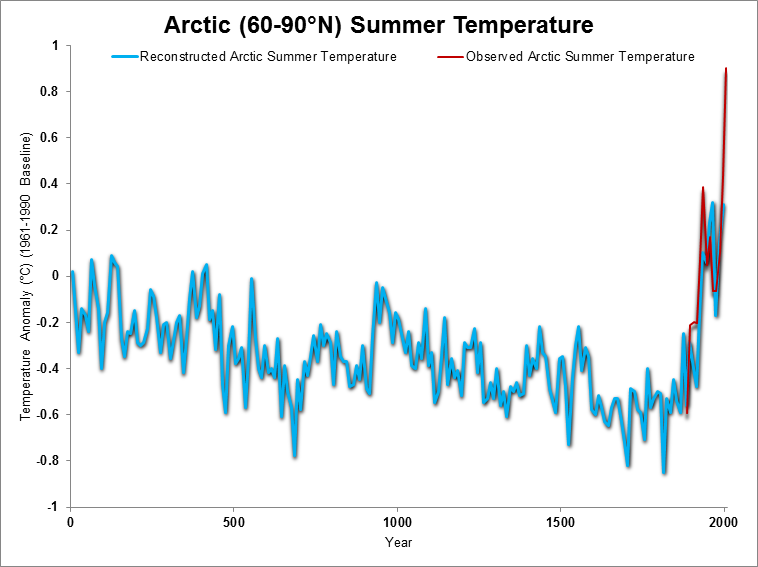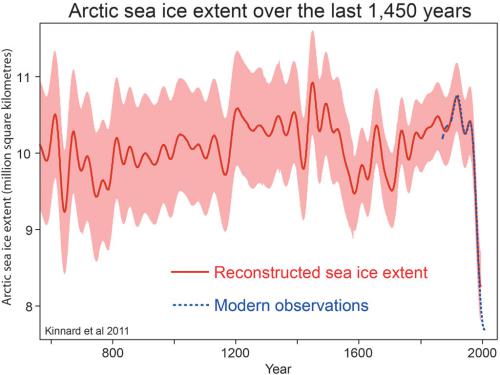skookerasbil
Platinum Member
- Thread starter
- #21
LOL From the Danish site;Provided by Danish Arctic Research Institute >>
Arctic Ocean almost totally ice-covered - Map - Ice Age Now
Hey Al!!@www..com
Understanding the Arctic sea ice: Polar Portal
Introduction
Sea ice is the layer of ice formed on top of the sea when it freezes. The sea ice in the Arctic covers almost all of the Arctic Ocean during winter. The extent is absolutely enormous: In the month of March, when the ice reaches its maximum extent, it covers approximately 16 million km2, seven times the area of Greenland.
When seawater freezes, the ice crystals growing to form the ice layer reject the salt from the ice, making the water below the ice much saltier. The difference in density between ice and water makes the ice float. The sea ice is highly dynamic. It moves around the Arctic Ocean, pushed and pulled by winds and currents. The extent of sea ice also shrinks and grows during the seasons. During the winter it grows to its maximum in March, and during the summer it diminishes. The sea ice minimum extent is reached in September, the extent is only about 1/3 of that in March.
Two measures for sea ice
The sea ice in the Arctic has reacted noticeably to the rise in air and ocean temperatures: There is significantly less sea ice now compared to 30 years ago.
Scientists use two basic measures for sea ice: extent and thickness.
Extent: Since 1979 it has been possible to monitor sea ice by satellite. We now have more than 30 years of reliable information on the extent of the sea ice cover.
The data shows that the extent in the summer is 30% smaller than it was at the beginning of the 1980s. The extent during winter has diminished by about 10%. In September 2012, the ice extent set a new minimum record: it was the smallest measured since 1979. Compared to the average extent (1979-2000), the sea ice had diminished by 49%.
Figure 1. The development of the extent of the Arctic sea ice by the end of the summer (red line) and at the end of the winter season (blue line). Even though the variation from year to year is obvious, the trend is equally clear. <font color="red">We have improved the algorithms that calculate sea ice concentration and extent. On June 28, 2016, we updated the graphs of ice extent with new data of higher quality (read more <a href="Ocean and Ice Services | Danmarks Meteorologiske Institut" class="external-link-new-window" title="Opens external link in new window" data-htmlarea-external="1">here</a>).</font>
Now that says just opposite of what the site you linked to implied. LOL What liars you people are.
But fAiL.....us people weren't the ones who said the Arctic ice would be long gone by now. So here we are in 2018 and the Arctic is completely covered in ice. You people wonder why the voters dont care about climate change? There ya go!
 As the Trump landslide proved, the voters dont go for progressive fakery anymore.
As the Trump landslide proved, the voters dont go for progressive fakery anymore.
 . In fact, they now expect it @www.whosnotwinning.com
. In fact, they now expect it @www.whosnotwinning.comYears ago, Gore used to make a splash with these weekend bomb throwing headline grabs.....now the folks chuckle.
Last edited:





 .....ice covering the whole Arctic!!
.....ice covering the whole Arctic!!  Can post up 5,000 fake graphs....like they say, a picture is worth 1,000 words!
Can post up 5,000 fake graphs....like they say, a picture is worth 1,000 words!

